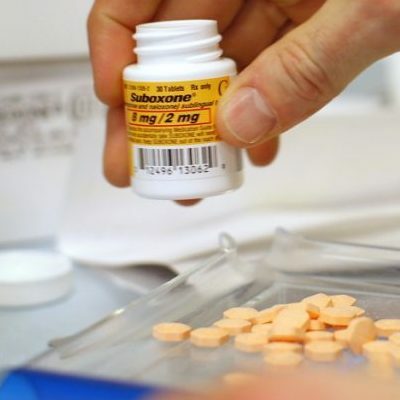Medication-assisted treatment saved Brenda Smith’s life. A 40-day jail sentence could have put it back at risk.
Instead, thanks to a federal judge’s ruling in a case brought by the ACLU of Maine, the Madawaska woman will get her medication — and an opportunity to continue her successful treatment unabated.
Unfortunately, she doesn’t have much company. Many incarcerated people have opioid use disorder — it is often the reason they are incarcerated — but few have access to treatment, and fewer still have access to medication-assisted treatment, the best available form.
Without treatment, people involved in the criminal justice system are more likely to die of an overdose, particularly immediately following release, when their drug tolerance is low following detox. They are more likely to re-offend, as well.
As noted in Judge Nancy Torresen’s ruling in the Smith case, years of evidence shows that medication-assisted treatment — the use of buprenorphine, methadone and naltrexone to reduce cravings and lower drug sensitivity — works. It is the most proven form of treatment for opioid use disorder, and it has allowed countless Americans to create stable, productive lives out of the chaos and sickness of addiction.
Yet in jails and prisons, the depositories of so many people caught up in the opioid epidemic, it is virtually nonexistent.
In the federal prison system, where an estimated 40 percent of the population have a substance use disorder, only methadone is available, and then only for initially detoxing new arrivals. The Trump administration has began offering Vivitrol, an extended-release version of naltrexone, as a single shot before release, but it’s unclear how widespread it is being used, and how effective.
In state prison systems, Rhode Island and Vermont are the only two to offer all three of the top medications; in other prison and jail systems, access is extremely limited.
In Maine, a ban on medication-assisted treatment at state prisons was lifted in February by Gov. Janet Mills, who is following through on her promise to expand addiction treatment at all levels.
Most county jails have a similar ban still in place, though use of Vivitrol is increasing.
There is less stigma attached to Vivitrol, a shot that blocks the euphoric effects of opioids, than there is with methadone or buprenorphine, which many see as replacing one drug with another — and which have been abused in some situations. That helps explains Vivitrol’s popularity.
However, Vivitrol does not have the same long track record of success as the other two drugs, which are indisputably part of any robust response to the opioid epidemic.
Opioid overdoses now kill more Americans under 50 than anything else. A recent study forecasted 500,000 more deaths over the next decade as strong synthetic opioids flood the market and treatment options remain insufficient.
To keep that forecast from coming true, medication-assisted treatment must be available where, when and for whom it is needed, regardless of age, race, geography, level of insurance, or status of incarceration.
Moreover, opioid use disorder is a disease and must be treated like one — jails and prisons shouldn’t be able to refuse treatment anymore than they could deny insulin to a diabetic or statins to heart patient.
It is that stigma that is keeping many Americans from getting the treatment they need.
Thankfully, the ruling in favor of Brenda Smith, and others like it, have the good sense to swipe that stigma aside and replace it with the facts.
Send questions/comments to the editors.



Comments are no longer available on this story